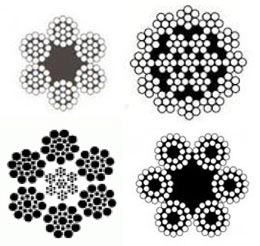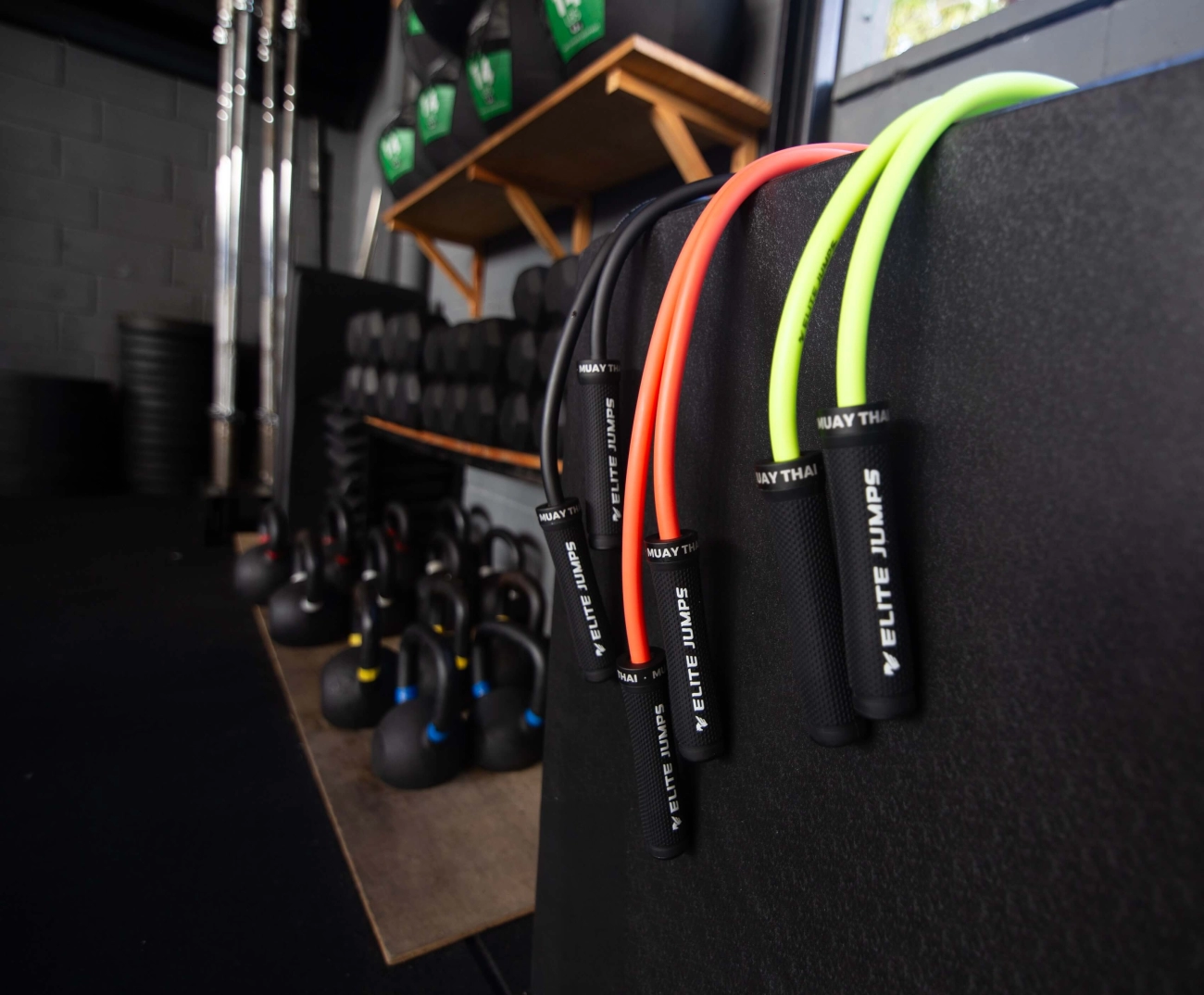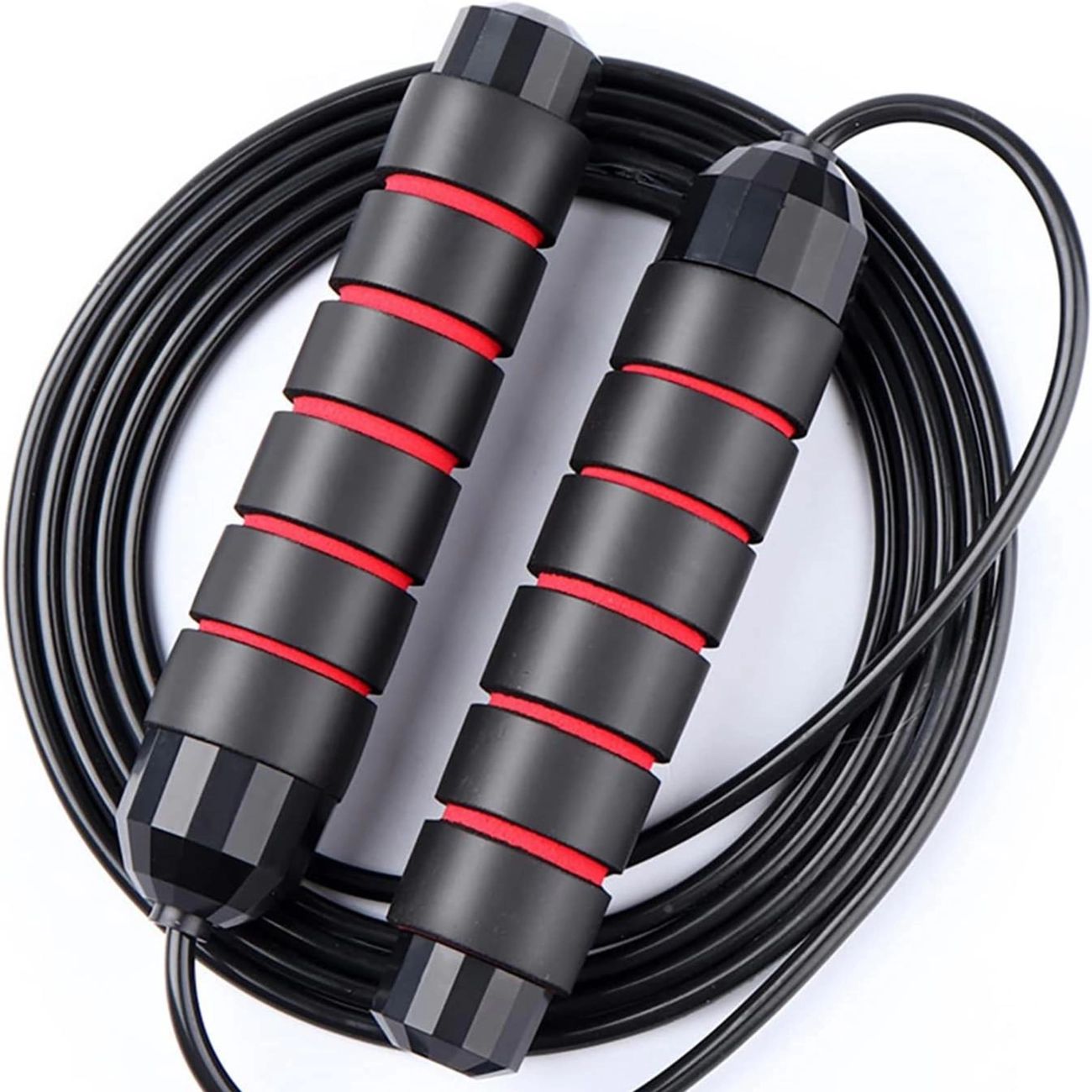What Is a Skipping Rope Replacement Cable
A skipping rope replacement cable is the core wire or cord that connects the handles of a jump rope, allowing it to rotate smoothly and withstand repetitive motion during workouts. Over time, regular use can wear down the original cable, making replacement essential to maintain performance and safety. Replacement cables serve the purpose of restoring the rope’s functionality without needing to buy an entirely new skipping rope.
Types of Skipping Rope Cables
Skipping ropes come with different kinds of cables designed to fit various styles and user needs. The most common types you’ll find include:
- Coated Steel Cable: Often used in speed ropes and performance jump ropes, these cables feature a strong steel core with a protective coating (usually PVC or nylon). They offer excellent durability and smooth rotation, making them popular for advanced speed and double-under skipping.
- PVC Cable: Made entirely from flexible plastic material, PVC cables are lightweight and less prone to tangling. They work well for beginners or casual users who want an affordable and low-maintenance option.
- Nylon or Fabric Rope Cables: These are softer, sometimes used in beaded jump ropes or weighted ropes. They provide better grip and feel but may wear faster with heavy use.
Key Features and Components of a High-Quality Replacement Cable
When choosing a replacement cable, keeping an eye on these features ensures quality and long-term value:
- Durability: The cable should resist fraying, rust, and snapping under frequent use. Coated steel cables with thick, smooth coatings enhance durability.
- Smooth Coating: A sleek, consistent coating reduces friction inside handles and prevents tangling or snagging mid-jump.
- Correct Length and Thickness: The cable needs to match your jump rope handle’s specifications to ensure proper rotation and comfort.
- Flexibility and Weight: Depending on your style (speed vs endurance), the cable should be light enough for quick spins but sturdy enough to withstand impact.
A high-quality cable combines these attributes to provide a reliable, safe jump rope experience that meets various training demands. By understanding the types and features of skipping rope replacement cables, you can choose the right one tailored to your workout style.
Signs You Need to Replace Your Skipping Rope Replacement Cable

Knowing when to swap out your skipping rope cable is key to keeping your workouts smooth and safe. Over time, cables wear down and that can throw off your rhythm or worse, cause injury. Here’s what to watch for.
Common Issues with Skipping Rope Cables
- Fraying: Look closely at the cable surface. If you see tiny strands sticking out or breaks in the coating, your cable is fraying. This weakens the wire and can lead to snapping.
- Kinks and Twists: Cables that have sharp bends or kinks won’t spin properly. They may cause the rope to snag or catch while jumping.
- Rust or Corrosion: Metal cables, especially uncoated or poorly maintained ones, can develop rust spots. Rust stiffens the cable and reduces flexibility.
- Stiffness: A good cable should have some flex. If your cable feels stiff or brittle, it’s likely aged or damaged.
- Snapping or Breakage: If the cable snaps or breaks during use, replacement is immediate. Don’t try to use a broken cable—it’s dangerous.
How to Inspect Your Skipping Rope Cable for Wear and Tear
- Visual Check: Run your fingers along the cable to detect rough spots, cracks, or exposed wires.
- Flex Test: Bend the cable gently. If it doesn’t flex smoothly or shows signs of breaking, it’s time to replace.
- Handle Connection Check: Inspect where the cable meets the handles. Look for loose fittings or damaged ends as these can affect performance.
- Rotation Smoothness: Spin the rope and notice if it feels uneven or slow. A worn cable usually causes poor rotation.
Impact of a Damaged Cable on Workout and Safety
Using a damaged skipping rope cable can:
- Disrupt your rhythm: Kinks or stiffness slow down your speed and timing.
- Cause injuries: Frayed or broken cables might snap unexpectedly, risking cuts or falls.
- Reduce effectiveness: A bad cable prevents smooth turns, making your workout less efficient.
- Increase frustration: Constant tugs or tangles can ruin motivation and progress.
Keeping an eye on your cable’s condition helps maintain workout quality and keeps safety front and center. Replace your skipping rope cable as soon as you notice these signs.
How to Choose the Right Skipping Rope Replacement Cable
Picking the right skipping rope replacement cable comes down to a few important factors. Getting this right ensures your jump rope feels smooth, lasts longer, and matches your workout style. Let’s break down what you need to consider.
Match Cable Length and Thickness to Your Skipping Rope Handle
Compatibility is key. Your replacement cable needs to fit your rope’s handle perfectly:
- Length: Make sure the cable length matches your height and jump style. Too long or too short cables throw off your rhythm.
- Thickness: Cables vary from thin speed wires to thicker, weighted cables. Handles are designed to accommodate specific thicknesses, so match them for a secure fit and smooth rotation.
If you’re unsure, check the specs of your current cable or the handle. For example, many handles designed for speed ropes work best with thin steel or coated wire cables.
Consider Cable Material for Durability and Smoothness
The material you pick affects how your rope feels and behaves:
- Coated Steel: Durable and smooth, coated steel cables (like PVC-coated) resist fraying and rust. They glide fast and are great for speed and advanced workouts.
- PVC or Nylon: These are lighter and flexible but less durable. They’re good for beginners or casual use but wear out faster.
- Uncoated Steel: Offers a raw, fast spin but tends to rust and fray quicker without protection.
Pro tip: If you want a cable that lasts and feels smooth over time, go for a coated steel cable. It’s the best balance for most users.
Coated vs Uncoated Cables Pros and Cons
| Feature | Coated Cable | Uncoated Cable |
|---|---|---|
| Durability | High, resistant to wear | Lower, prone to rust and fraying |
| Smoothness | Very smooth glide | Rougher, can snag |
| Weight | Slightly heavier | Lighter |
| Maintenance | Easier, less rust worries | Needs frequent care |
| Best for | Speed, endurance, frequent users | Beginners, casual jumpers |
Speed Cable vs Weighted Cable Differences
Your skipping style influences cable type choice:
- Speed Cables: Thin, lightweight wires designed for fast rotations. Ideal for speed jumping, double unders, and workouts focused on agility.
- Weighted Cables: Thicker and heavier, helping build strength and endurance. Perfect if you want to add resistance for more muscle engagement.
Recommendations Based on Skill Level
- Beginners: Start with a PVC or nylon-coated cable to keep things flexible and forgiving. It’s easier on the joints and less intimidating.
- Intermediate Jumpers: Move to a coated steel cable for durability and improved speed. This helps you refine technique without constantly replacing cables.
- Advanced Users: Use thin coated steel speed cables for precision and fast rotations, or weighted cables if you want high-intensity training.
Choosing the right cable isn’t just about replacement — it’s about upgrading your skipping rope experience. For a durable, smooth, and perfectly matched cable, explore our 8-foot skipping rope options that include ideal cables and handles tailored for different user needs.
Step by Step Guide How to Replace Your Skipping Rope Cable

Replacing your skipping rope cable doesn’t have to be complicated. Whether you’re swapping out a speed rope replacement wire or a durable coated steel cable, this guide will walk you through every step, making the process simple and fast.
Tools Needed for Skipping Rope Cable Replacement
Before you start, gather these basic tools:
- Small screwdriver (usually a flathead or Phillips, depending on your rope handle)
- Pliers (to grip or twist wires as needed)
- Scissors or wire cutters (to trim excess cable)
- Measuring tape or ruler (for adjusting cable length)
- Lubricant or silicone spray (optional, to ease movement and prevent rust)
How to Replace the Skipping Rope Cable Step by Step
-
Remove the old cable
- Loosen any screws or caps on your skipping rope handles.
- Carefully pull out the worn cable from both handles.
- Dispose of the old cable safely, especially if it has frayed ends.
-
Measure and cut your new cable
- Lay the new cable next to the handles to match the original length.
- Remember to leave a small extra length (about 1 inch) for adjustments inside the handle.
- Use wire cutters to trim the cable cleanly.
-
Attach the new cable to handles
- Thread one end of the cable through the handle’s insertion hole.
- Secure it by tightening screws or clamps on the handle. Make sure it’s firm but not over-tightened to avoid damage.
- Repeat on the other handle.
-
Adjust cable length and tension
- Test the rope length by standing on the middle of the cable and pulling the handles up; the handles should reach your armpits.
- Adjust the cables inside the handles if needed by loosening screws, sliding the cable, and retightening.
-
Check rotation and movement
- Spin the handles to ensure smooth rotation with no sticking or snagging. A well-installed cable moves freely for faster, more efficient skipping.
Tips for Proper Cable Installation and Adjustment
- Do not overtighten screws — it can bend or break your new jump rope wire cable.
- Use a lubricant like silicone spray inside the handles if rotation feels stiff.
- Make sure the cable is secured firmly to prevent snapping during intense workouts.
- If your rope uses ball bearings, double-check they are clean and lubricated before replacing the cable.
Troubleshooting Common Cable Replacement Issues
- Cable won’t fit handle: Double-check cable diameter is compatible with your handle model.
- Cable slips inside handle: Tighten screws more firmly or use a small piece of tape on the end of the cable to add grip.
- Rope twists or snags when spinning: Inspect for any cable kinks or bends; straighten or replace cable if needed.
- Cable frays after replacement: Make sure to cut cable ends cleanly and try using a PVC coated cable for added durability.
By following these straightforward steps, you can quickly swap out your skipping rope cable and get back to your workout with confidence. Proper replacement and maintenance ensure your jump rope performs smoothly and lasts longer.
Maintenance Tips for Skipping Rope Replacement Cable
Keeping your skipping rope cable replacement in good shape means better performance and longer life. Here’s how to maintain it properly:
Proper Use and Storage
- Avoid rough surfaces: Skipping on gravel, concrete, or asphalt can wear down your cable quickly. Use smooth floors or mats when possible.
- Store in a dry place: Moisture causes rust and deterioration. Keep your cable in a dry, cool spot away from direct sunlight or humidity.
- Don’t bend or kink the cable: Coil your rope loosely after use to prevent sharp bends that can weaken the wire.
Cleaning Tips to Prevent Rust and Degradation
- Wipe after each use: Use a soft cloth to remove sweat, dust, and dirt from your cable. This keeps the coating intact and prevents buildup that speeds up wear.
- Use mild soap and water occasionally: If your cable gets grimy, wipe it gently with mild soap and water, then dry it thoroughly. Avoid harsh chemicals or soaking the cable.
- Check and treat uncoated parts: For uncoated steel cables, apply a light layer of silicone spray or lubricant to prevent rust.
When to Perform Routine Inspections
- Inspect weekly if you train daily: Look for fraying, rust spots, stiffness, or kinks.
- Check before every workout for signs of wear if you jump less often but still want to prevent issues.
- Replace your cable immediately if you notice any cracks, broken wires, or if the cable feels stiff or tangled beyond fixing.
Regular maintenance of your durable skipping rope wire cable not only enhances your workout experience but keeps you safe from sudden snaps or injuries. A little care goes a long way to keep your jump rope ready for every session.
Why Choose JumpRopeWholesale for Your Skipping Rope Replacement Cable Needs
When it comes to finding a high-quality skipping rope replacement cable, JumpRopeWholesale stands out as a reliable choice for US customers who want durability, performance, and value. Here’s why we’re trusted by jump rope users and fitness pros alike.
Wide Product Range and Superior Manufacturing Quality
At JumpRopeWholesale, we offer an extensive selection of replacement cables designed to fit all types of skipping ropes—from coated steel cables and PVC jump rope wires to advanced nylon options. Each cable is made with premium materials to ensure smooth rotation, flexibility, and long-lasting strength. Our manufacturing process follows strict quality controls so you always get a durable skipping rope wire cable that performs exactly as expected.
Custom Cable Options and Bulk Order Benefits
Whether you need a standard speed rope replacement wire or a specialized weighted cable, we provide custom cable lengths and thicknesses tailored to your skipping rope handles and style. This makes finding the perfect cable easy and ensures compatibility without guesswork.
For gyms, fitness trainers, or retailers, we offer bulk ordering discounts that make purchasing multiple cables affordable without sacrificing quality. This is a great way to keep your gear ready or stock up on replacement parts for your team or customers.
Dedicated Customer Support and Warranty
We back every skipping rope cable replacement with responsive customer service that’s ready to help with product questions or fit advice. Our team understands the importance of matching the right cable for your workout needs and can guide you through the process.
Additionally, JumpRopeWholesale provides a warranty on our cables, so you can buy confidently knowing that if any manufacturing defect occurs, we’ll make it right—no hassle. This strong commitment to customer satisfaction sets us apart.
Choose JumpRopeWholesale for your replacement cable needs and experience quality, customization, and support designed with the active US jump rope community in mind.
Frequently Asked Questions About Skipping Rope Replacement Cable
Can I Use Any Cable for Replacement
Not all cables are interchangeable. Compatibility matters because skipping rope handles and cables vary in thickness, length, and attachment style. Using the wrong cable can cause fit issues or poor performance. Always check your rope’s handle requirements before buying replacement cables to ensure the correct size and type.
How Long Does a Skipping Rope Cable Usually Last
The lifespan of a skipping rope cable depends on several factors:
- Material quality (coated steel cables tend to last longer)
- Frequency of use
- Storage and maintenance
For regular users, a quality cable can last 6 months to a year or more. Heavier use or skipping on rough surfaces can shorten its life. Routine inspection can help you spot wear early so you can replace before it snaps.
Can I Replace My Cable on Any Skipping Rope Model
Most skipping ropes with replaceable cables allow you to swap them out, but not all models are designed for easy cable replacement. Some budget or beaded ropes have fixed cables. Check if your rope has removable end caps or screws that let you swap cables. If it doesn’t, you may need a new rope or a model specifically built for cable replacements.
What’s the Best Cable Type for Speed Versus Endurance
Choosing a cable depends on your skipping style:
| Style | Recommended Cable Type | Why |
|---|---|---|
| Speed Jumping | Thin coated steel cable | Lightweight, low friction, fast rotation |
| Endurance | PVC or nylon coated cable | More durable, less chance of tangling |
| Beginners | Thicker PVC or nylon cable with handles | Easier to control, more forgiving |
Coated steel cables are ideal for speed ropes used in workouts requiring fast turns and precision, while PVC or nylon cables offer durability and easier handling, which is better for longer sessions and beginners.
Knowing these basics can help you pick the right skipping rope replacement cable that suits your style and keeps your workout smooth and safe.



